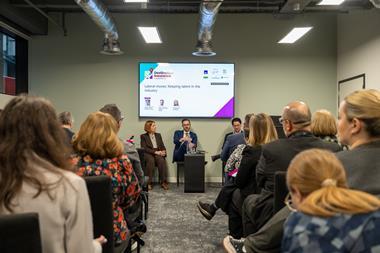The new technology can save insurers tens of thousands of pounds in indemnity spend per claim, and has so far processed 5,000 claims
Keoghs has launched an artificial intelligence (AI) lawyer to help process its insurance claims, inform its negotiation strategies with claimant law firms and lower indemnity spend.
Named Lauri, the AI lawyer has been deployed for five of the law firm’s top 10 insurance claimants, and has processed 5,000 claims, mostly low volume bodily injury cases.
Keoghs partner and innovation director Dene Rowe says the first stage of the process is for Lauri to receive the claim and perform the initial processing using machine learning techniques.
“The system can receive the notification of a claim from the insurer and then process that using machine learning by reading the documents electronically and then processing it through process optimisation and feeding back the results,” he says.
Ultimately, however, the new claims robot is all about data and improving the way claims are handled, not just simple automation.
“On the back of this [processing] we are getting some great data insight,” Rowe says. “The artificial intelligence creates different data fields [to those collected from manual claims processing] and that is changing the way some of these claims is handled.”
What makes Lauri different is that the AI allows Keoghs to proactively adapt to the data it is seeing, allowing tactics to be changed in order to drive down overall costs.
“We are able to uncover some things using AI that under manual handling we just wouldn’t have seen, particularly around things like negotiation tactics and behaviours, as well as how a claimant solicitor is handling these types of claims,” Rowe says. “This insight allows us to change some of our claims strategies to make them more efficient and reduce indemnity spend. It’s a bit like chess really, if you know what the other side is going to do next then it makes things much easier.
“When we look across the 5,000 claims [already processed by Lauri], we are able to prevent certain events happening, which is where we can deliver savings to our clients, and that could run into the tens of thousands of pounds.”
When it comes to the future of human claims handlers, Rowe says that technology such as this may lead to the loss of some of the human element in claims handling, its ultimate aim is to add value to the actions of human staff who will then be better informed to carry out the right decisions.
“Certain aspects of the claims portfolio will be automated, particularly in low value areas where automation can take the grunt work out of it,” he says. “The biggest thing we are seeing, however, is the tactics and the strategies the data is giving us to make the claims handler better informed to get the right results.”
Hosted by comedian and actor Tom Allen, 34 Gold, 23 Silver and 22 Bronze awards were handed out across an amazing 34 categories recognising brilliance and innovation right across the breadth of UK general insurance.



















































No comments yet